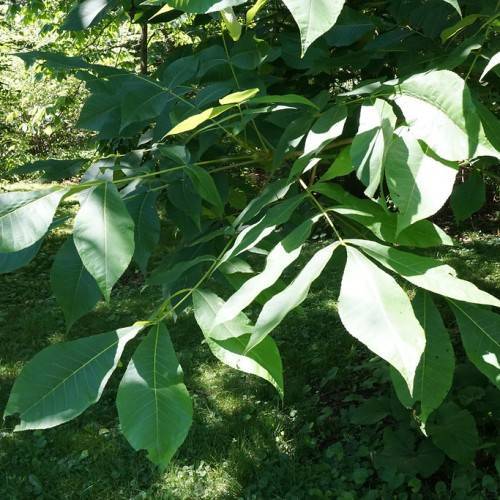
shellbark hickory
Carya laciniosa
Also Known As - Kingnut Hickory,Bigleaf,Bottom Shellbark,Big Shagbark Hickory,Big Shellbark HickoryCycle:
Perennial
Watering:
Frequent
Hardiness Zone:
5 - 8
Flowers:
Flowers
Sun:
Full sun,part shade
Soil:
Sandy Loamy Clay
Fruits:
Fruits Ready In Fall
Edible:
Yes
Leaf:
Yes
Growth Rate:
Low
Maintenance:
Low
Drought Tolerant:
Yes
Salt Tolerant:
Yes
Thorny:
Yes
Care Level:
Medium
watering
Shellbark hickory tree is a deciduous species that needs moist, well-drained soil. When watering shellbark hickory saplings, make sure to water the soil slowly and evenly for several minutes until it is moist but not soaked. This can be done 2-3 times per week or more during periods of drought. When the tree is established, water once a week to 10 days during periods of drought. Try to water on an as-needed basis, rather than on a regular schedule, so that the roots will establish themselves more deeply and be more resistant to drought.
sunlight
Shellbark hickory trees need a great deal of sunlight to stay healthy. They should receive full sun exposure for at least 8 hours a day. In areas with intense summer heat, it is recommended that the trees receive some afternoon shade to protect them from the intense sun. During the autumn, winter, and spring, shellbark hickory trees should receive as much direct sunlight as possible to ensure proper growth and health.
pruning
Shellbark hickory (Carya laciniosa) typically does not require pruning, especially when planted in its natural environment. However, if you must prune the tree, it is best to do so in late fall (November or December) after the tree’s foliage has dropped. Prune out any damaged, dead, or diseased branches at this time. If the tree is planted in an urban environment, you can prune severely to keep the tree from growing too large. In this case, begin the pruning about 10 years after planting and then repeat pruning sessions every 3 to 5 years after that. Trim back only about 1-third of the length of the branches at each pruning session. It is important to never remove more than 1-third of the height and length of the tree, unless it is severely overgrown.
